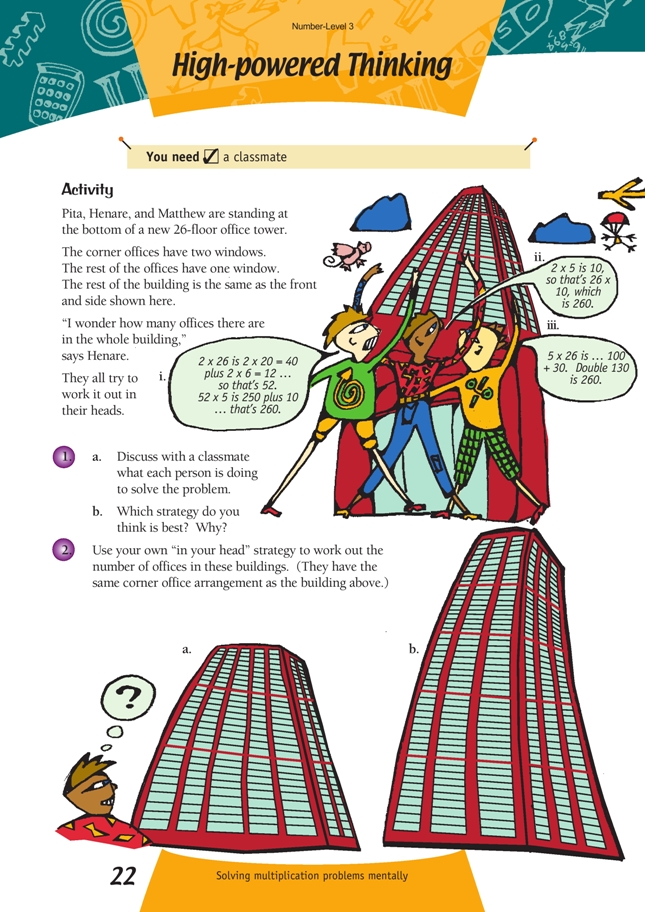This is a level 4 number activity from the Figure It Out series. It relates to Stage 7 of the Number Framework.
A PDF of the student activity is included.
Click on the image to enlarge it. Click again to close. Download PDF (165 KB)
solve multiplication problems using mental strategies
A classmate
This activity encourages students to solve multiplication problems mentally.
After students have attempted question 1, make sure you discuss the feature of this problem that would make multiplication the most efficient way of solving it. This feature is the arrangement of he windows in equal groups so that counting and adding are unnecessary if you know how to multiply.
Have students produce other problems that could be solved by multiplying mentally. Ideas may include problems such as: “What is the number of baked bean tins in a stack of cartons if one carton holds 12 tins and there are 20 cartons?” “If the average CD has 20 tracks, how many tracks might there be in a stack of 25 CDs?”
Try to have students include some problems that use three factors, such as: “A park has 15 pūriri trees. Each tree has 20 branches, and each branch has six kererū. How many kererū are there altogether?”
As a daily routine, ask students to solve a maths question “in their heads”. It is also important that at least three of the mental strategies used to answer one of the daily questions be shared by the class every day. It is more worthwhile to spend part of the lesson time doing this than having students complete the traditional 10 mental questions. If time is at a premium, consider doing fewer questions so that students can focus on sharing strategies.
Answers to Activity
1. a. Answers will vary but could include:
i. The office block is 2 offices deep. If you look at each column of windows
in the front, there are 2 x 26 offices behind each column. Since there are 5
columns, there are 5 x 52 = 260.
ii. Each floor has 2 x 5 = 10 offices. There are 26 floors, so there are
10 x 26 = 260 offices in the whole building.
iii. There are 5 x 26 offices with windows on the front of the building and 5 x 26
offices with windows on the back of the building. 5 x 26 = 130, and 130 x 2 = 260.
b. Answers will vary.
2. Strategies will vary. Actual number of offices are:
a. 290
b. 392. (All offices have windows, so there are no internal offices in the middle row.)
